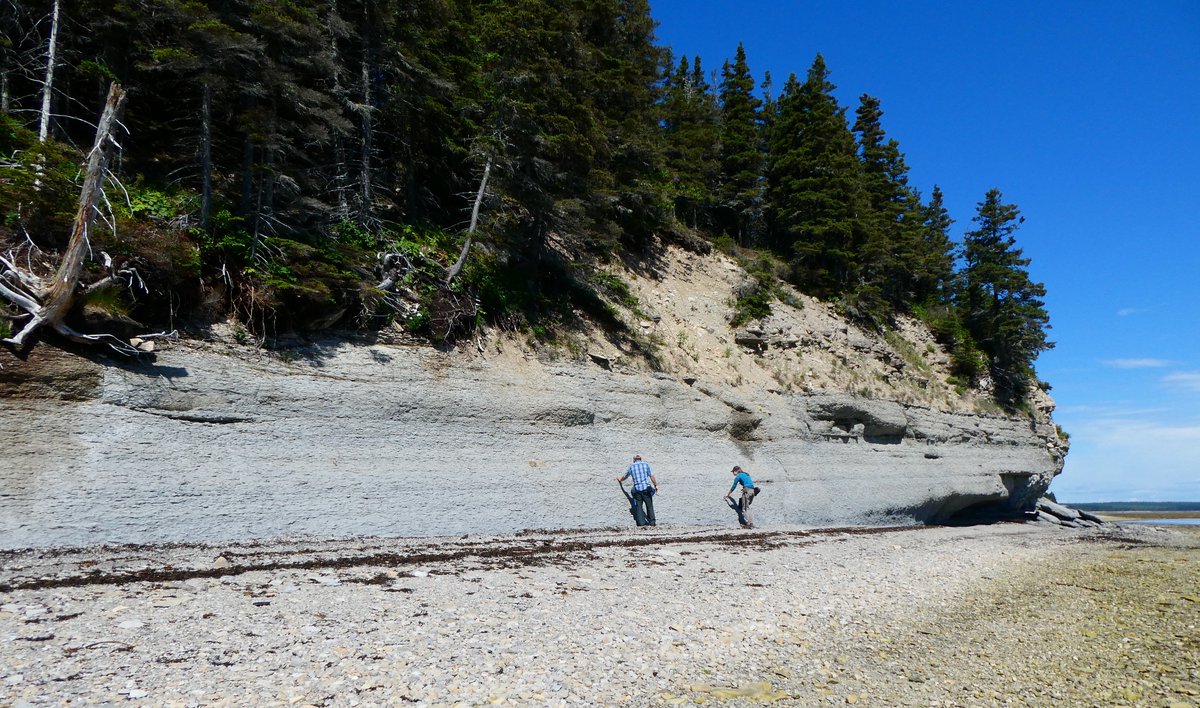Two Studies Uncover Earth’s Mysteries

Earth is a complex place, and researchers in the Department of Earth and Environmental Sciences (EES) are working to advance understanding of the planet’s features and evolution. In two recent studies, professors in EES set out to determine factors that contributed to one of the world’s five great extinctions, as well as investigate whether scientists will ever be able to settle on exactly how many species inhabit the Earth. Their findings could one day help combat climate change and assist in conservation efforts around the world.
Study I: The Factors Behind Earth’s First Major Mass Extinction
We all know that the dinosaurs died in a cataclysmic event. But did you know that there were other mass extinctions? There are five most significant mass extinctions, known as the “big five,” where at least three quarters of all species in existence across the entire Earth faced extinction during a particular geological period of time. With current trends of global warming and climate change, many researchers now believe we may be in a sixth.

Researchers examine an Ordovician Period outcrop on the shoreline of Anticosti Island, Quebec, Canada. (Credit: André Desrochers, University of Ottawa)
Discovering the root cause of Earth’s mass extinctions has long been a hot topic for scientists, as understanding the environmental conditions that led to the elimination of the majority of species in the past could potentially help prevent a similar event from occurring in the future.
A team of scientists from Syracuse University’s Department of Earth and Environmental Sciences, the University of California, Berkeley and the University of California, Riverside, Université Bourgogne Franche-Comté, the University of New Mexico, the University of Ottawa, the University of Science and Technology of China and Stanford University recently co-authored a paper exploring the Late Ordovician mass extinction (LOME), which is the first, or oldest of the “big five" (~445 million years ago). Around 85% of marine species, most of which lived in shallow oceans near continents, disappeared during that time. The results from their study have been published in the journal Nature Geoscience.

Brachiopod fossils from the Ordovician Period outcrop on Anticosti Island, Quebec, Canada. (Credit: André Desrochers, University of Ottawa)
One of the major debates surrounding LOME is whether lack of oxygen in seawater, (anoxia), caused that period’s mass extinction. To investigate this question, the team integrated geochemical testing with numerical simulations and computer modeling.
Zunli Lu, professor of Earth and environmental sciences at Syracuse University, and his students took measurements of iodine concentration in carbonate rocks from that period, contributing important findings about oxygen levels at various ocean depths.
Their data, combined with computer modeling simulations, suggested that there was no evidence of anoxia in the shallow ocean animal habitat where most organisms lived, meaning that climate cooling combined with additional factors likely was responsible for LOME.

Zunli Lu
On the other hand, there is evidence that anoxia in deep oceans expanded during that same time, which could be explained by altered ocean circulation patterns.
According to Lu, recognizing that climate cooling can also lead to lower oxygen levels in some parts of the ocean is a key takeaway from their study.
“For decades, the prevailing school of thought in our field has been that global warming causes the oceans to lose oxygen and thus impact marine habitability, potentially destabilizing the entire ecosystem,” Lu says. “In recent years, mounting evidence points to several episodes in Earth’s history when oxygen levels also dropped in cooling climates.”
While the causes of Late Ordovician extinction have not been fully agreed upon, nor will they for some time, the team’s study rules out changes in oxygenation as a single explanation for extinction and favors temperature change as the driver of LOME.
Study 2: Why We May Never Know How Many Species Have Existed
*Hint: The past does not predict the future.
Ever since Swedish naturalist and explorer Carolus Linnaeus developed the uniform system for defining and naming species of organisms, known as binomial nomenclature (e.g., “homo sapiens” for human beings), scientists have wondered if they will ever be able to predict the total number of species that have existed on the planet. At current count, there are about 65,000 known vertebrate animals, including mammals, birds, reptiles, amphibians and fishes. EES professors explored whether the scientific community will ever be able to settle on a total number of species of vertebrates. By knowing what’s out there, researchers argue that they can prioritize places and groups on which to concentrate conservation efforts.

Linda Ivany, left, and Bruce Wilkinson.
Research Professor Bruce Wilkinson and Professor Linda Ivany, both from the Department of Earth and Environmental Sciences, recently co-authored a paper in the Biological Journal of the Linnaean Society in which they determined that forecasting the total number of species will never be possible.
When asking the question, ‘how many species?,’ it is important to note that only a fraction of existing species have ever been named, so researchers extrapolate a curve based on the history of naming species. Theoretically, the curve should reach a point in the future when all species will have been found.
A Parallel to Oil Production
Wilkinson, a geologist, noticed parallels between the discovery curves of new species and that of oil. The theory of resource exploitation suggested that the number of discoveries over time would follow a bell-shaped curve: The curve rises as production rate increases due to new discoveries and then decreases as production declines, despite all the effort continuing to go into finding the resource.
“The problem with using that curve to predict how much is left is that you have to assume that the effort invested and the approach used to discover new oil, or species, is consistent and known,” says Wilkinson. “We used to think we’d gone over the peak for oil and gas around 1972, but then 15 or so years ago someone figured out how to do horizontal drilling, and all of the sudden there was a new bump in the amount being discovered.”

Discovery curves representing new barrels of oil found per year (top) and new species named per year (bottom).
New Technologies, New Means of Discovery
Wilkinson and Ivany say that the discovery curve for new species of vertebrate animals shows a similar bump. Like the increase in the oil curve caused by horizontal drilling in the early 2000s, there was a surge in new species discovery beginning around 1950, when new funding was being dedicated to science after the World War II, more scientists were going into biology, and new molecular techniques were leading to an increase in the ability to distinguish species from one another.
In oil production and species discovery, unforeseen changes in effort and method altered the way the discovery curves were playing out.
If researchers had estimated the total number of species based on data prior to 1950, their estimates would be much different from any estimate made today, and both would likely be wrong because future developments cannot be predicted.
“As much as we’d like to know the number, the total species richness of the planet will remain an elusive target,” says Ivany.


